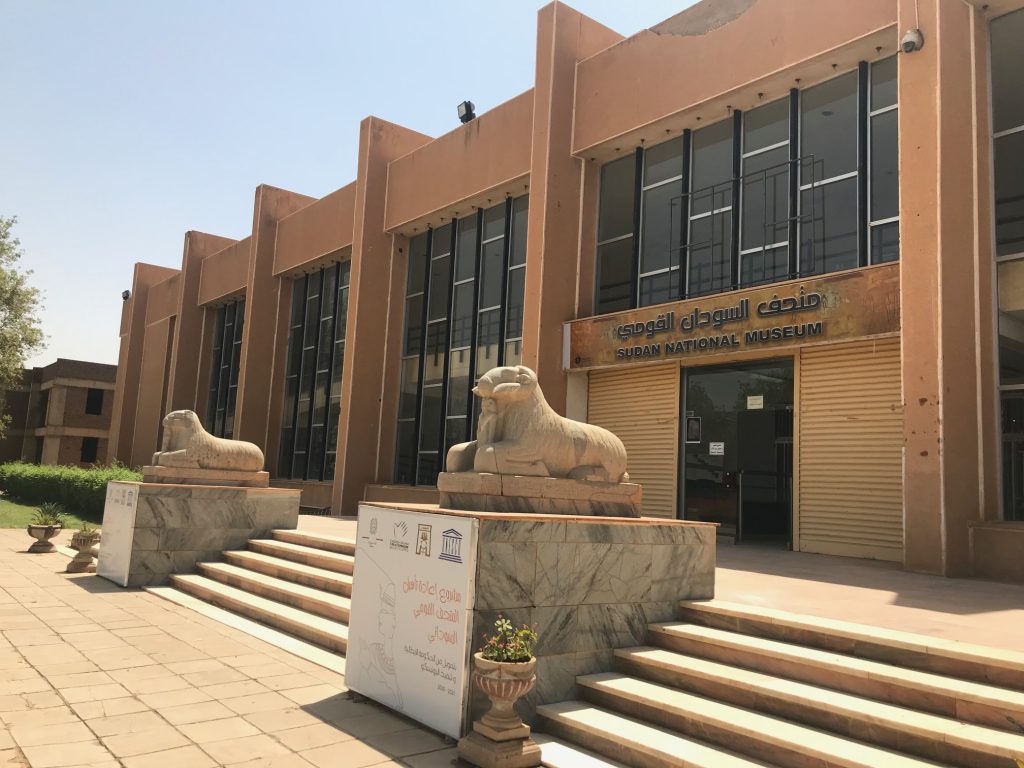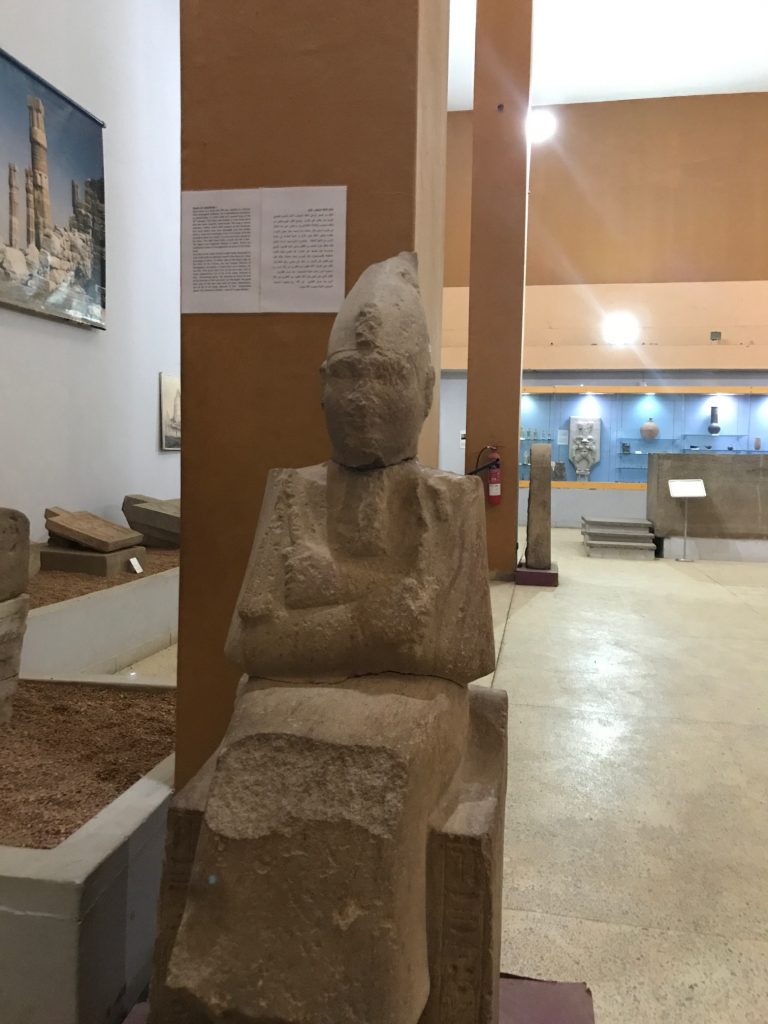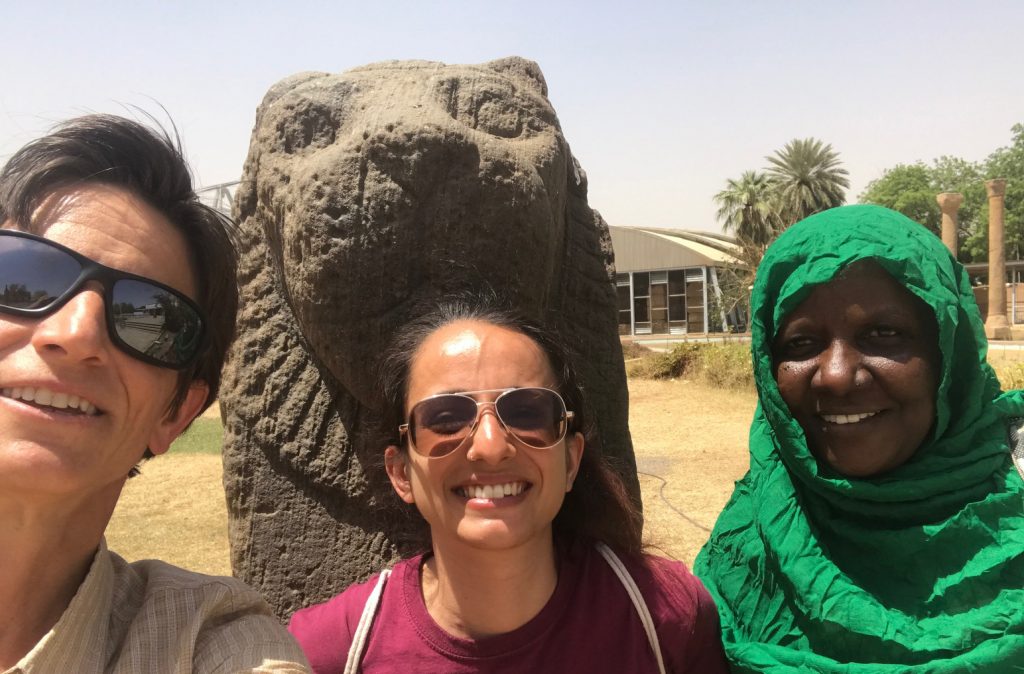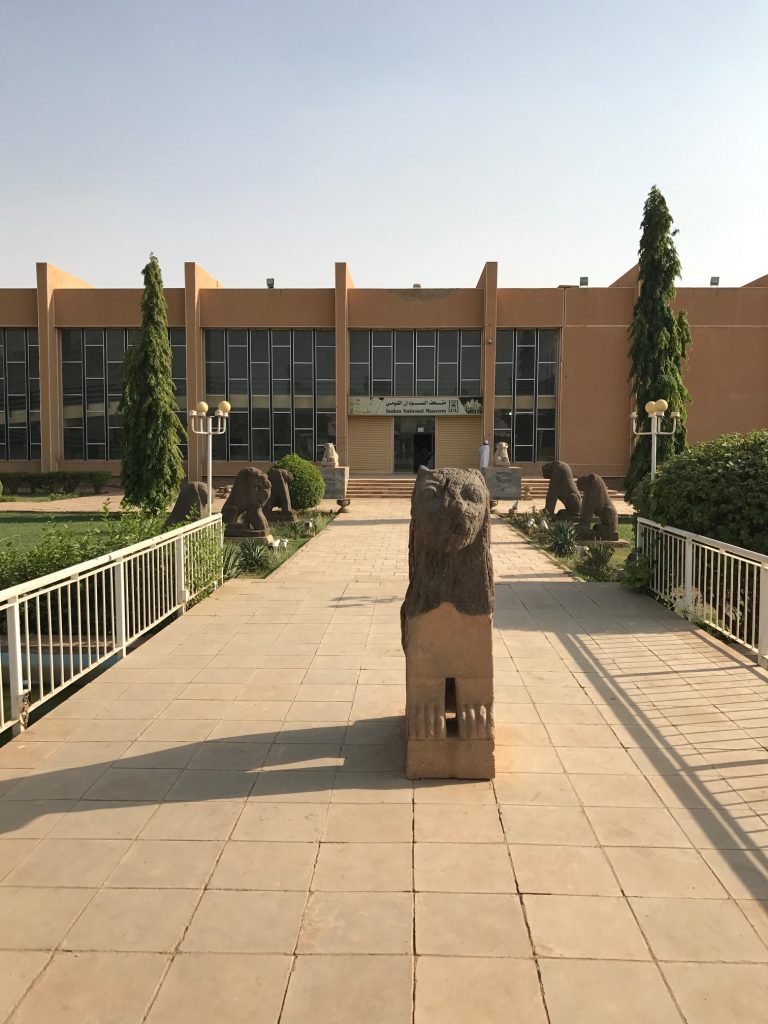A year ago today, the last official steps of our 2020 season of the MUAFS project were carried out, I submitted all paperwork to the Sudanese authorities and we were getting ready to leave Khartoum – of course not knowing that a) a sandstorm will delay our flight out, b) because of the extra night in Khartoum we will just catch the last flight to Munich from Istanbul before flights were closed in Turkey because of the pandemic and c) it will take us more than a year to return to Sudan.
One of my personal rituals I have developed in the last 10 years is that on the occasion of my last day in Khartoum, I always try to visit the Sudan National Museum, at least the garden with its wonderful monuments, but preferably the galleries with its treasures as well.

My first visit to the museum was exactly 20 years ago – but the building and its treasures impress and inspire me deeply every time anew. The Sudan National Museum in Khartoum clearly belongs to my favourite museums, together with the splendid Aswan Nubian Museum and the Luxor Museum in Egypt.

It is always a great pleasure to give newcomers of the team a special tour though the museum – last year this was Jessica and we had the luck that our dear friend and colleague Huda Magzoub joined us. This photo shows us in the entrance alley to the museum together with one of the marvelous Meroitic lion sandstone statues of Basa, representations of the lion-god Apedemak.

I can just recommend to everyone: do not miss this marvelous museum and please calculate several hours for your visit – the ground floor gallery is full of important objects from all areas of Sudan, from Palaeolithic to Post-Meroitic times. And the upper floor gallery focusing on the Christian Medieval Kingdoms of Nubia is equally a must, featuring the world-famous wall paintings from the cathedral in Faras (a very useful guide through the collection is available online for free).


Like at Aswan, I think the most charming aspect of the museum is its garden. Here, one can visit complete temples (the splendid New Kingdom temples of Buhen, Semna-West and Kumma) and one rock-cut tomb (of Djehuti-Hotep) but also a large number of statues, including monumental royal statues, reliefs and rock art respectively rock inscriptions are exhibited.

I very much hope that my yearly ritual of a stroll through this wonderful collection and enjoying the view of the monuments in the garden will be possible again soon, hopefully somewhen later this year.
